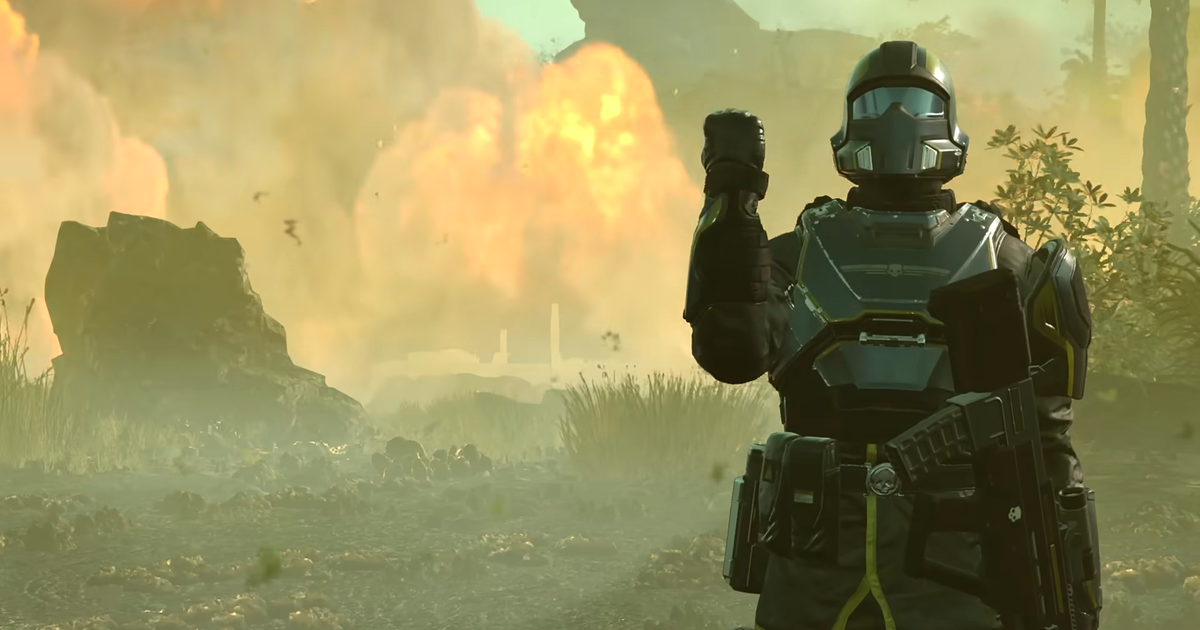In a sea of sequels, Banishers: Ghosts of New Eden has a wonderfully fresh story to tell. I didn’t know I wanted to play as a ghost-hunting detective in a supernatural, alternate reality version of 1600s America, but developer Don’t Nod provides such a compelling mix of death, drama, and romance it made me wonder why no one had tried this sooner. It mostly sticks the landing with the things it tries beyond that story as well, from the excellent concept of swapping between your living and spectral protagonists, to its absolutely stellar investigation mechanics. That said, other parts of Banishers aren’t as original, borrowing the bulk of its structure from plenty of action-adventure games before it, but with stiff and repetitive combat that can’t stand up to those inspirations. Even still, for those in favor of weird games brimming with heartbreak and ectoplasm alike, there’s a lot to enjoy here.
Banishers: Ghosts of New Eden is the latest entry in a genre I’ve inadvisably taken to calling “crevice crawlers.” Y’know, those third-person games with a serious story and slow pacing, where two people walk around and talk to one another in hushed tones in between combat encounters, and for some reason you spend a lot of time squeezing through crevices to get from place-to-place? I’m talking God of War, A Plague Tale, The Last of Us – classic crevice crawlers. Anyway, while I quite enjoy the occasional sad whispering duo sidling through rubble, at this point the formula is also pretty played out. In the case of Banishers, it made the adventure feel more familiar than I cared for (despite a refreshingly original setting), owing to its steadfast adherence to that trendy template.
Though it certainly doesn’t win points for innovation, Banishers executes on this blueprint quite well, with strong writing, likable characters, and a few good twists and turns in the story to make for an enjoyable cross country odyssey. Playing as Red, the overly-emotional Scotsman with hair that’s way too cool for the time period, and Antea, the ill-tempered master ghost hunter who is a ghost herself, you’ll travel around talking to all kinds of pilgrims in order to solve their hauntings. As occult experts called Banishers in a mystical 17th century alternate reality, it’s your job to seek out ghosts, help them resolve their unfinished business, then send them to the afterlife, and that ends up being exactly as fun as it sounds. Seriously, who doesn’t want to be a dope slayer of specters and run around banishing spirits like an “Oops, All Ghosts” Geralt of Rivia?
As with a lot of games like it, Banishers does suffer from some pacing issues. There’s lots of repeated story beats where our heroes retread the same ground as they process their grief and discuss their dilemma, and you’ll be asked to crawl through dark places, climb mountain sides, and wait in extremely slow elevators while your characters talk about how much of a bummer death is. Thankfully, most of the time the writing is good enough to justify that pace, but I’ll admit I started to zone out by the eleventh or twelfth time I had to hear them chat about spectral webs. There are also lots of little unnecessary pauses that become tiresome, like how after every time you rest at a campfire to level up or use a fast travel point, your characters stare at one another lovingly for a few seconds before finally rising to their feet. There were several occasions where I’d sit through that only to realize I’d fast traveled to the wrong campfire and have to go back and watch it again.
Beyond taking on haunting cases and working to save the town of New Eden from its nightmarish fate, you’ll also be free to roam the map in search of optional combat encounters, puzzles to be solved, and side quests to tackle, all of which are fairly solid. Special combat scenarios offer an extra level of challenge for those who would seek it by throwing in modifiers that require you to change up your playstyle, like one where only certain types of attacks do any real damage, and puzzles offer some extra loot to help you upgrade your equipment by solving fairly straightforward environmental logic problems (simple “move this minecart here” or “shoot this magical target” type stuff). Side quests allow you to dive a little deeper into characters you meet throughout the main quest, with some really quality writing and smaller stories to engage with, though you aren’t given a ton of incentive to tackle these aside from learning a bit more about the world.
The supernatural reimagining of colonial America is a fantastic backdrop for the tale of love and loss at the center of things, with death and the afterlife constantly looming over our paranormal heroes. When Antea is killed in the story’s opening moments and becomes a ghost, Red finds himself working in tandem with the very thing he’s supposed to combat, which creates a really cool dilemma where you’ll need to decide to stay the course and work toward your partner’s ultimate banishment or forsake your duties in an attempt to bring her back to life. Wandering around the countryside to help others resolve their own losses in your role as a Banisher and uncovering the sordid history of New Eden gives you plenty of opportunities to decide what kind of ghost hunter you want to be, with lots of morally gray situations you’ll be asked to weigh in on.
However, it is a little disappointing that, with all the interesting supernatural mysteries they set up, you only get three nuance-free options to choose from at the end of each case. You can either give the ghost its ascent, which is a friendly way of sending it to the afterlife, banish the ghost, which is basically just an aggressive way of doing the same thing, or you can blame the living, killing them and absorbing their essence in your quest for power. The only way to bring your love back from the dead is by sacrificing as many people as possible, so blaming the living is mostly presented as the “evil” choice, even when some of these humans totally deserve to get got. Meanwhile, banishing or ascending the dead are usually framed as two flavors of the right thing to do, even in cases where a living person is clearly in the wrong.
In many scenarios, having to choose just one of those conclusions feels like you’re being unnecessarily forced to pick a side – or worse yet, you’re just choosing the option that’s going to get you to whichever ending you’re shooting for. For example, in one case I encountered two equally guilty twins, one who had been killed and while the other was still alive, and had to choose to get rid of the ghost or kill the living twin. It would have been nice to have the option to banish the ghost and turn the human into the authorities, or engage with that situation in any number of more nuanced ways.
That doesn’t stop it from being extremely cool to step into the boots of two ghost investigators though, as you swap between your living and dead characters to make use of their unique abilities as you hunt for clues, track your quarry through the woods, and interview suspects. As Red, you’re able to perform dope rituals to do things like see visions from the past via psychometry or compel spirits to show themselves to you, while as Antea you can see invisible objects hidden in the world and use your awesome and kinda terrifying spectral powers to manipulate the environment, like letting out a banshee shriek to destroy barriers. Swapping between the two perspectives to uncover clues, overcome simple logic puzzles, and solve mysteries is without question the best part of Banishers, and made me eager to tackle every new haunting case that popped up on my map.
The instant character swapping carries over into combat too, where you’ll either be fighting with sword and rifle as Red or throwing phantom haymakers and using ghost powers as Antea, and the concept mostly succeeds there as well. What starts out as a fairly barebones system of dodge rolling, parrying, and light or heavy attacks gradually evolves into something much more compelling as you unlock abilities throughout the adventure. For example, I absolutely love the unlockable perks that let you time your swapping between characters in the middle of a hit combo in order to trigger a special attack, which also provides a window of invulnerability as one character is replaced with the other. By the end, I was able to swap back and forth between the two without a break in my assault, triggering special maneuvers along the way, like Antea’s ability to leap across the map to smack someone in the face.
Similarly, there are lots of interesting opportunities to customize your equipment loadout and skill tree perks to fit your playstyle, like how I would take all the powers that granted me buffs at the cost of longer ability cooldowns, but then complimented them with equipment that made me stronger for each power that was currently waiting on a cooldown. And since you’re given the ability to switch out all your abilities and equipment every time you rest at a campfire, there’s plenty of freedom to completely change up your playstyle as you go without getting locked into a specific build or having to pay some obscene skill tree reset fee.
Combat definitely has some hiccups, though, as controlling your characters often feels pretty clunky. Movement can be sluggish or downright unresponsive as you get caught on the smallest things when you roll around. Sometimes the camera can also move in erratic ways, especially when it’s trying to focus on something with Banishers’ hit-or-miss lock-on system. I was playing on the hardest difficulty, and died on more than one occasion when the lock-on system wouldn’t do its thing or would bizarrely point the camera in the opposite direction of the enemy. It’s still enjoyable to take on armies of apparitions, but combat is definitely missing a certain level of polish that can be pretty frustrating.
Enemy variety also became painfully scarce less than halfway through the roughly 30 hours it took me to complete the story, as there’s only a handful of enemy types that are added far too slowly to keep combat fresh. Wolves, which are introduced right at the beginning, became especially tiresome when I was still seeing them 20 hours later, and I cannot even begin to describe to you how many of those poor, furry beasts I sent whimpering into the afterlife. That said, most of the monsters in the mix are at least interesting to fight, from specters that dive into the corpses of other enemies to reanimate them, to skeletal marksmen who keep their distance and try to take you out with a rifle. I just wish I didn’t have to see the same undead faces so often, because by the end even my favorites had become irritations.


